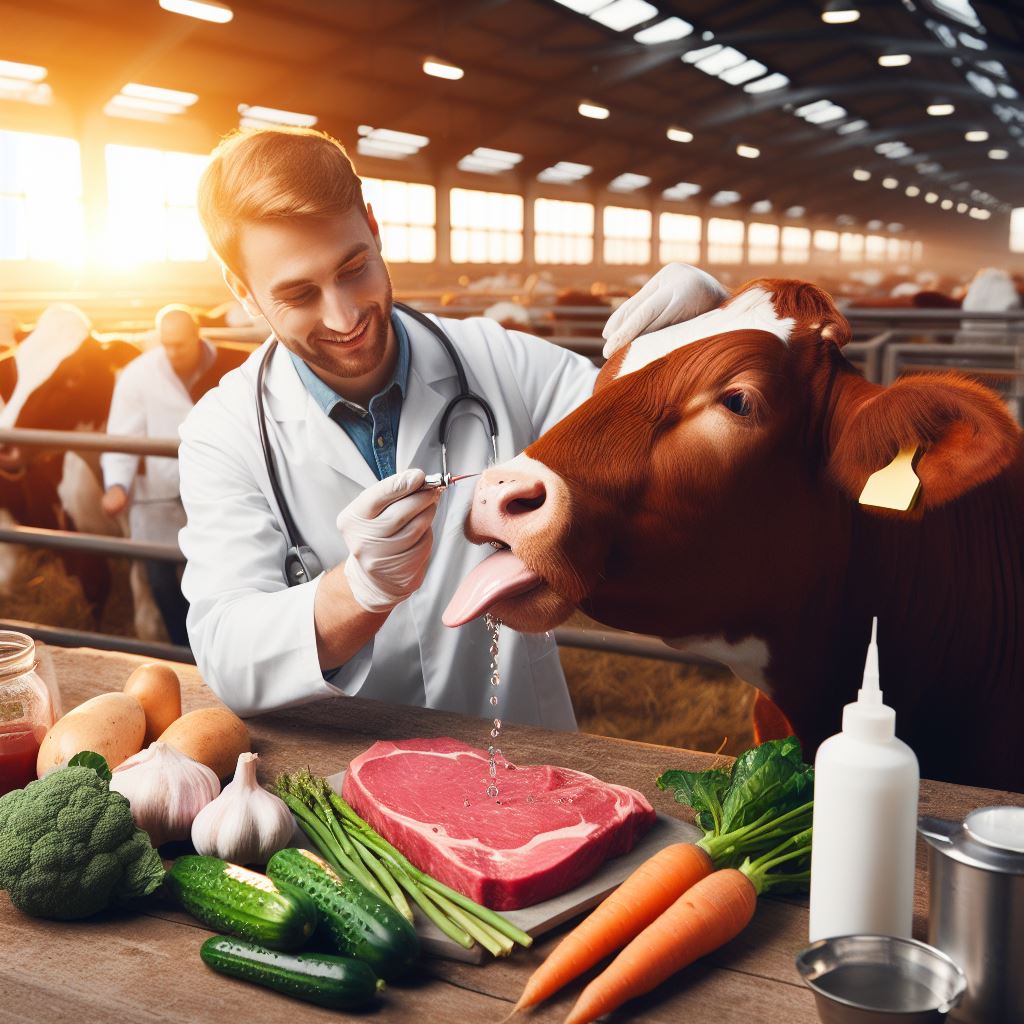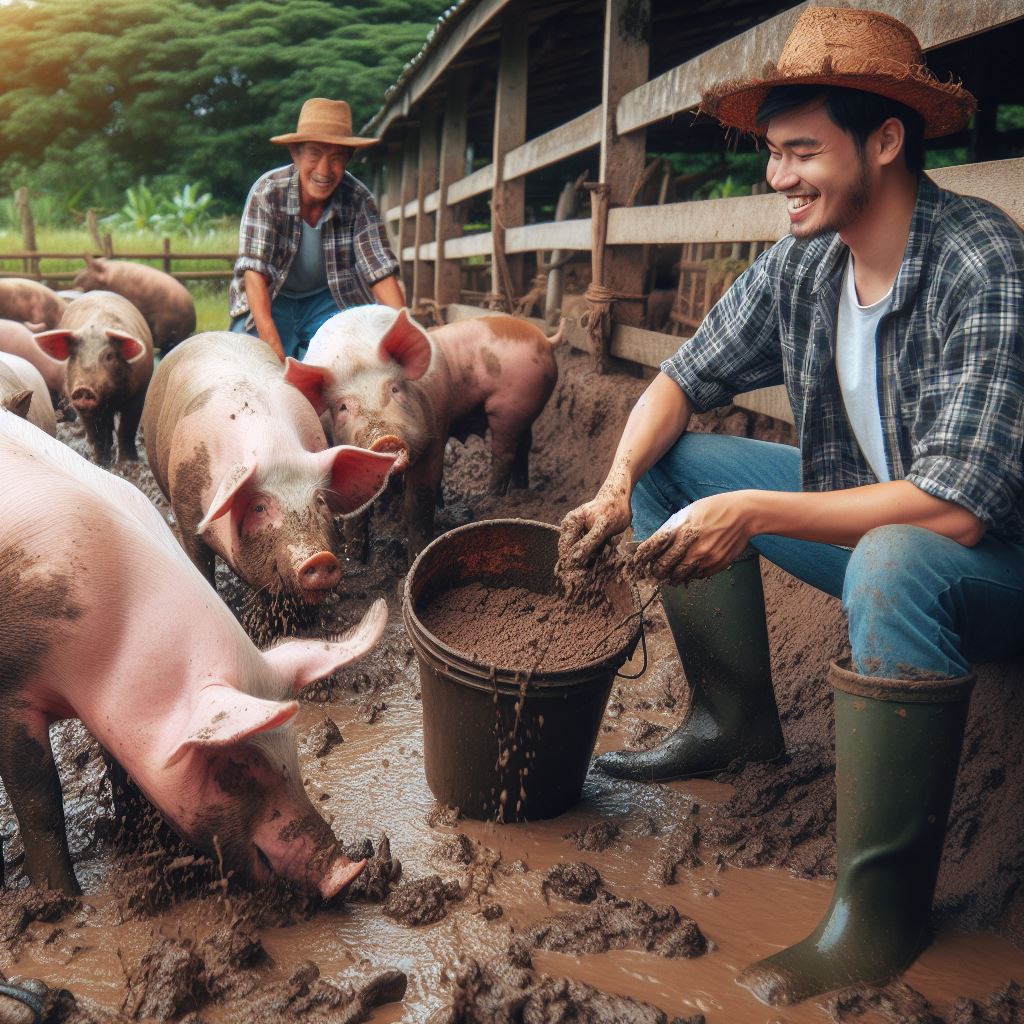Introduction
Kidding in goats and the importance of managing births.
Kidding in goats is a crucial aspect of goat husbandry that requires effective birth management.
Proper management is essential for the health and well-being of both the dam and kids.
Managing the birth process is of utmost importance as it ensures the safety and health of the dam and her offspring.
By actively engaging in birth management techniques, goat owners can prevent potential complications and ensure successful deliveries.
Effective birth management is critical for the health and well-being of both the dam and kids.
One important aspect of birth management is ensuring proper nutrition for the pregnant doe.
Providing a well-balanced diet rich in essential nutrients, such as calcium and protein, is vital for a healthy pregnancy.
Regular monitoring of the doe’s body condition and weight can help identify any nutritional deficiencies that may arise during gestation.
Additionally, maintaining a clean and comfortable kidding environment is crucial for preventing the spread of infections and minimizing stress on the doe.
Creating a separate and sanitized kidding area with ample space for the doe and her kids can significantly reduce the risk of diseases and other potential complications.
It is also important to closely observe the pregnant doe for any signs of labor, such as restlessness, pawing at the ground, or vocalization.
Being present during labor allows for timely intervention in case assistance is needed, ensuring a safe delivery for both the dam and her kids.
After the successful birth, proper care must be given to the newborn kids.
This includes ensuring adequate colostrum intake for passive immunity, umbilical cord care, and monitoring for any signs of illness. It is also important to provide a warm and dry environment for the kids to prevent hypothermia.
Essentially, effective birth management is crucial for the overall health and well-being of the dam and kids during the kidding process.
By practicing proper nutrition, maintaining a clean environment, and closely monitoring the birth process, goat owners can ensure successful and healthy deliveries.
Transform Your Agribusiness
Unlock your farm's potential with expert advice tailored to your needs. Get actionable steps that drive real results.
Get StartedStay tuned for our next blog post where we will dive deeper into specific tips and techniques for managing kidding in goats.
Purpose of the blogpost
In this blog post, we will provide valuable insights and tips on successfully managing kidding in goats.
Understanding the Kidding Process
Goats are incredible animals that bring joy and productivity to people all over the world.
One of the most exciting and important aspects of raising goats is managing the birthing process, also known as kidding.
Kidding refers to the act of a goat giving birth to its offspring, and it is crucial for goat owners to have a thorough understanding of this process.
In this blog post, we will delve into the natural kidding process in goats, including the gestation period and signs of approaching labor.
We will also discuss the different stages of labor and what to expect during each stage.
Finally, we will highlight the typical duration of labor and when to be concerned about prolonged or difficult labor.
The natural kidding process in goats, including the gestation period and signs of approaching labor.
The gestation period for goats typically lasts around 150 days, which is approximately 5 months.
However, it is essential to note that this can vary by a few days or even a week, depending on the individual goat.
As the due date approaches, there are several signs that indicate labor is imminent.
These signs include a distended udder, relaxation of the muscles around the tailhead, and a nesting behavior where the goat seeks out a secluded and comfortable spot to give birth.
The different stages of labor and what to expect during each stage.
Once labor begins, it progresses through different stages.
The first stage is characterized by restlessness and discomfort, with the goat frequently lying down and standing back up.
This stage can last several hours, and it is crucial to provide a calm and stress-free environment for the goat during this time.
The second stage of labor is when the actual delivery of the kid(s) occurs.
The goat will exhibit strong contractions, and the kids will be born one after another.
The goat may vocalize and strain during this stage, and it is important to observe the process closely to ensure everything goes smoothly.
The typical duration of labor and when to be concerned about prolonged or difficult labor.
The duration of labor can vary depending on various factors, such as the goat’s age, size, and previous kidding experience.
On average, labor can last around 1 to 4 hours.
However, it is important to note that prolonged or difficult labor can occur.
If a goat has been in active labor for more than 4 hours without any progress or if it appears to be in distress, immediate veterinary assistance should be sought.
Delayed or difficult births can pose risks to both the mother and the kids, so it is crucial to act promptly.
In essence, understanding the kidding process in goats is essential for goat owners.
Showcase Your Farming Business
Publish your professional farming services profile on our blog for a one-time fee of $200 and reach a dedicated audience of farmers and agribusiness owners.
Publish Your ProfileBeing aware of the gestation period and signs of approaching labor allows for better preparation and care.
Recognizing the different stages of labor and knowing what to expect during each stage helps ensure a safe and successful kidding experience.
Additionally, being knowledgeable about the typical duration of labor and when to seek veterinary assistance in cases of prolonged or difficult labor is vital for the health and well-being of the goats.
By being proactive and informed, goat owners can help their goats have a smooth kidding process and welcome healthy kids into their herds.
Preparing for Kidding
The importance of proper nutrition for the pregnant doe.
Proper nutrition is crucial for the health of the pregnant doe and the development of the kids.
A well-balanced diet rich in minerals and vitamins ensures a successful kidding process.
The significance of providing a clean and comfortable kidding area.
Creating a clean and comfortable kidding area helps minimize stress and reduce the risk of infections.
A clean environment promotes a healthy start for the newborn kids and ensures the doe’s wellbeing.
The essential supplies to have on hand, such as clean towels, disinfectant, and hemostats.
Having essential supplies readily available is vital for a smooth kidding process.
Clean towels are needed for drying off the newborns, while disinfectant helps maintain hygiene.
Hemostats are useful for cutting and clamping the umbilical cord, ensuring a safe delivery for the kids.
Advise on the necessity of creating a calm and stress-free environment for the doe.
A calm and stress-free environment is crucial for a successful kidding process.
Stress can negatively impact the doe’s ability to give birth and affect the health of the newborn kids.
It is essential to provide a quiet space, free from loud noises or excessive activity, to keep the doe at ease.
By ensuring a stress-free environment, the chances of a successful kidding process are significantly improved.
In conclusion, preparing for kidding involves several crucial steps.
Proper nutrition, a clean and comfortable kidding area, and essential supplies are essential for a smooth process.
Creating a calm and stress-free environment is equally important for the doe’s well-being and the health of the kids.
By taking these necessary precautions, goat owners can increase the chances of a successful kidding experience.
Read: Managing Reproduction in Sheep and Goats
Assisting During Kidding
Guidance on when and how to intervene during the kidding process.
It is important to closely monitor the doe during labor to determine if intervention is necessary.
Signs that assistance may be needed include prolonged labor without progress, visible distress in the doe, or abnormal positioning of the kid.
If intervention is required, it is crucial to assess the situation calmly and quickly.
Clean your hands thoroughly before attempting any intervention to avoid introducing bacteria into the birth canal. Use a gentle touch and be mindful of the doe’s comfort.
The basics of delivering a kid, including proper positioning and gentle traction techniques.
When delivering a kid, it is essential to ensure the correct positioning for a smooth and successful birth.
The kid should be presented with both front feet and the nose visible first.
Gentle traction techniques may be necessary to assist the doe in pushing the kid out.
Apply gentle pressure downward and slightly back during contractions to aid the natural expulsion process.
Avoid excessive force or pulling, as it may cause injury to both the doe and the kid.
If you encounter any difficulties or concerns, don’t hesitate to consult a veterinarian.
Importance of maintaining cleanliness and hygiene during the birthing process.
Cleanliness and hygiene are critical during the birthing process to minimize the risk of infection and ensure the well-being of both the doe and the kid.
Before assisting with the birth, thoroughly clean your hands and any equipment you are using.
Maintaining a sterile environment will help prevent the introduction of harmful bacteria.
It is also important to provide a clean and comfortable area for the doe to give birth.
Regularly clean and sanitize the kidding pen to reduce the chances of disease transmission.
Tips for dealing with potential complications, such as a stuck kid or a breech birth.
In some cases, kidding may not proceed as smoothly as expected, and complications may arise.
It is crucial to be prepared and know how to handle these situations.
If a kid becomes stuck during the birth process, assess the situation carefully.
Apply lubrication to aid the passage of the kid and attempt gentle traction while the doe pushes.
For a breech birth, it is essential to act promptly.
Showcase Your Farming Business
Publish your professional farming services profile on our blog for a one-time fee of $200 and reach a dedicated audience of farmers and agribusiness owners.
Publish Your ProfileGently realign the kid, so the hindquarters are properly positioned for delivery. Seek veterinary assistance if needed.
Remember, if you are uncertain or uncomfortable handling any complications, always consult a professional for guidance and assistance.
Read: Beef Cattle Grazing: Best Practices
Post-Birth Care
Immediate actions to take after a successful kidding
Dry off the kids using clean towels to prevent them from getting too cold.
Stimulate the kids by gently rubbing their bodies to encourage breathing and circulation.
The importance of ensuring each kid receives adequate colostrum within the first few hours
Colostrum, the first milk produced by the doe, is rich in antibodies and essential nutrients.
It provides passive immunity and jump-starts the kids’ digestive systems for proper growth.
Adequate colostrum intake within the first few hours is crucial for their overall health.
The process of umbilical cord care and how to prevent infection
After birth, tie off the umbilical cord about an inch from the kid’s belly using a clean string.
Disinfect the cut end of the cord with iodine or a suitable antiseptic to prevent infection.
Regularly inspect the cord for any signs of swelling, redness, or discharge, which may indicate an infection.
The need for monitoring the doe’s health and well-being post-birth
Ensure the doe is recovering well from the kidding process and is showing signs of normal behavior.
Monitor her appetite, hydration, and any signs of distress or discomfort.
If there are any concerns or abnormalities, consult a veterinarian for further assessment and treatment.
Read: Sheep Feeding 101: Nutrition for Flock Health

Safeguarding the Kids
The importance of creating a safe and secure environment for the newborn kids
As newborn kids are vulnerable, it is crucial to provide them with a safe and secure environment.
This involves ensuring the kids have a clean and comfortable shelter that protects them from harsh weather conditions.
Fence off the area where the kids are kept to prevent predators and escape.
Regularly inspect the fencing to ensure there are no gaps or weak spots that could compromise their safety.
Information on disbudding or dehorning procedures, if applicable to the breed and management goals
Disbudding or dehorning is a common procedure to prevent horns from growing in goats.
It is important to consider the breed and management goals before deciding to proceed with this procedure.
Consult with a veterinarian or an experienced goat keeper to understand the best practices and techniques for disbudding or dehorning.
Ensure proper pain management and follow all safety protocols to minimize stress and discomfort to the kids.
The necessity of proper nutrition and adequate colostrum intake for the kids’ growth and development
Nutrition plays a vital role in the growth and development of newborn kids.
Providing them with proper nutrition is essential for their overall well-being.
Milk is the primary source of nutrition for newborn kids.
Ensure they receive adequate amounts of colostrum, which is rich in antibodies and essential nutrients, within the first hours of birth.
Colostrum boosts their immune system and helps prevent diseases.
Common health concerns in newborn kids and strategies for prevention and treatment
Newborn kids are susceptible to various health concerns that require prompt attention and appropriate treatment.
Here are some common issues:
- Diarrhea: Monitor their feces and maintain proper hygiene to prevent the spread of pathogens. Consult a vet if diarrhea persists.
- Naval Infections: Keep the navel area clean and dry to avoid infections. Apply an antiseptic solution or cream if necessary.
- Pneumonia: Ensure proper ventilation and avoid overcrowding to prevent respiratory issues. Provide warmth during cold weather.
- Parasites: Implement an appropriate deworming schedule to control internal and external parasites.
Regular health check-ups, vaccination programs, and maintaining a clean environment are crucial preventive measures.
Seeking professional advice and promptly addressing any health concerns will contribute to the kids’ overall well-being.
Read: Sheep & Goat Vaccination Schedules
Conclusion
The key points discussed in the blog post, emphasizing the significance of effective kidding management.
In closing, effectively managing kidding in goats is crucial for the overall success and well-being of the animals.
Final tips or recommendations for successful kidding in goats
By ensuring proper nutrition, monitoring signs of labor, and providing a clean and comfortable birthing environment, farmers can greatly increase the chances of a successful kidding.
Additionally, it is important to have a plan in place for any potential complications or emergencies that may arise during the birthing process.
Encouragement to seek further information or consult with experienced goat farmers for any specific concerns or questions
Seeking further information or consulting with experienced goat farmers can provide valuable insight and guidance for any specific concerns or questions.
With the right knowledge and preparation, farmers can provide the best possible care for their goats during kidding season.




